Kaluga sage. Konstantin E. Tsiolkovsky
K.E. Tsiolkovsky
Konstantin Eduardovich was born on September 17 1857 in the village of Izhevsk, Ryazan Province. His father's name was Edward Ignatievich, and he came from a kind of impoverished Polish nobles. Tsiolkovsky Sr. worked in Spassky Forestry, Konstantin Eduardovich remembered him: “The father was known as a clever man, intolerant in his honesty ... He was a terrible debater and critic. The view was gloomy, the character - strong, heavy for others ... ". The mother of the future scientist, Maria Ivanovna (nee Yumasheva), was the complete opposite of her husband, "laughing and mocking." The family had thirteen children, but only four survived to mature years. Due to the difficult nature of Eduard Ignatievich, he often had to look for a new job. At 1858, he worked as a forest land manager with a local landowner, and at 1860, he became the clerk of the Forest Department in the city of Ryazan. Maria Ivanovna also engaged in raising children, introducing the young Kostya with literacy and arithmetic.
Speaking about himself, Konstantin Eduardovich emphasized that he was growing up to be a completely ordinary child - he climbed the roofs with enthusiasm, skated perfectly and skated, and in the ice drifted bravely on the ice floes. Already at an early age, Tsiolkovsky, by his own admission, dreamed "of an environment without gravity, in which movements in different directions are limitless and free." In 1867, the teen picked up scarlet fever. His young body coped with a dangerous disease, but it gave complications. As a result, the boy almost completely lost his hearing. Konstantin Eduardovich bitterly recalled: “Deafness made me suffer every minute spent with people. I felt forever isolated, deprived, outcast. ”
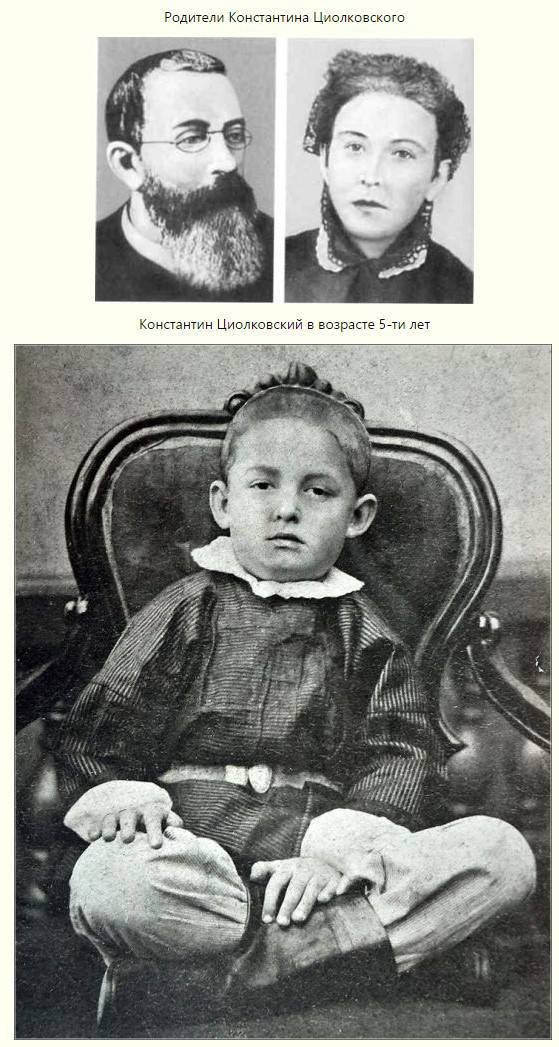
In 1868, the Tsiolkovsky family once again changed their place of residence, moving to Vyatka, where Eduard Ignatievich was assigned to the post of head of the Forest Department of the State Property Management Department. Constantine went to the Vyatka gymnasium. A teenager who has not mastered hearing loss has not shown any success in science. He noted: “I could not study at school because I did not hear the teachers, only unclear sounds”. In addition, Tsiolkovsky’s student was rather restless and often went to a punishment cell for his leprosy. In total, he studied at the gymnasium for four years, two of which he spent in the same class. And soon Konstantin suffered a new grief - mother Maria Ivanovna, who loved and supported the child in his misfortune, died in 1870. The home environment has become quite painful. My father became completely cold and restrained, "he did not offend anyone and did not touch him, did not allow himself either to swear, not to slander, but everyone was afraid of him ...".
Some enlightenment in the life of Tsiolkovsky appeared when he was fourteen years old. The fact that he could not get from teachers because of physical disability, the young man repaid the book. Konstantin began to take serious scientific works from his father’s library and independently investigate them. He wrote: “About fourteen years old I decided to read arithmetic, and everything seemed clear and clear to me. From this point on, I realized that books are not a tricky thing, but quite accessible. ” Arithmetic was followed by the popular "Complete Physics Course" by Adolf Gano, which has sustained dozens of publications in foreign countries, and translated into Russian by Florenty Pavlenkov. It is this textbook closely connected with practice, according to Tsiolkovsky, that really brought him closer to science. Interestingly, this book played the exact same role in the fate of Alexander Popov, the inventor of radio.
Among other things, the young man showed a talent for manual work. One of his first crafts was children's toys. Becoming older, Constantine managed to independently make a lathe. He began work on a self-propelled stroller for walking, however, despite the presence of functioning models, he threw the idea, believing that "this thing is impractical and not worth the effort." By the way, the lack of a full-fledged education greatly hindered the scientist. He himself confessed: "I did not have teachers, except books of dubious quality and limited quantity." In this connection, Tsiolkovsky often “invented the bicycle” - he independently came to the ideas set forth long before him. On the one hand, it took time and effort, on the other hand, from an early age, allowed Konstantin Eduardovich to cultivate in himself the criticality and independence of thinking, as well as an unbiased look at most scientific problems. Many years later, in a conversation with Soviet students, Tsiolkovsky joked: “The fact that in schools and universities you, the lucky ones, were explained to you in a few hours, took me years of thinking ... Would you give me the opportunity to study like that, you know what would have happened? Every Sunday would make a trip to Mars ... ".
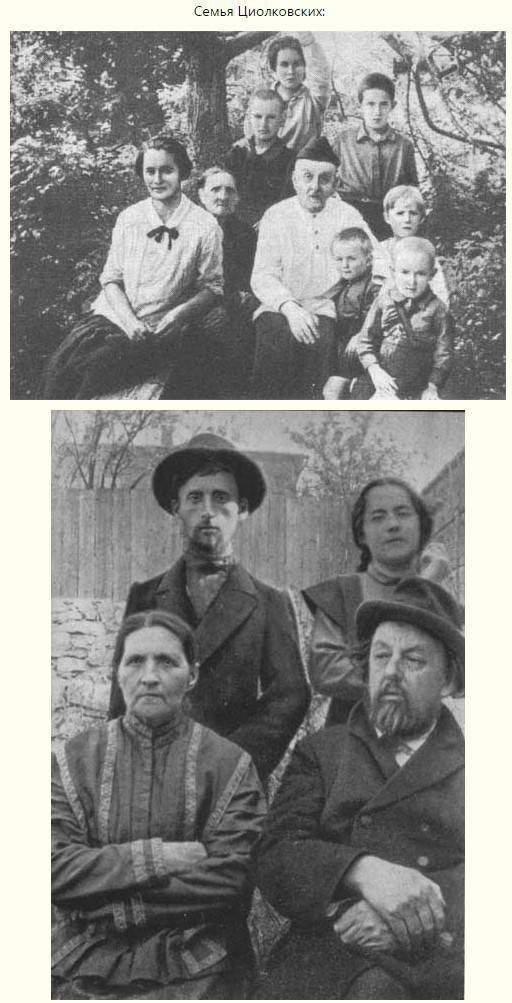
Eduard Ignatievich, of course, could not fail to detect his son’s outstanding abilities. And in 1873 he sent him to Moscow with the aim of entering the Higher Technical School (now - Bauman Moscow State Technical University). Unfortunately, Tsiolkovsky did not succeed in entering the school, but he decided to stay in the ancient capital and engage in self-education - compared to his native Vyatka, the Moscow libraries had all the literature he needed. From morning to evening Konstantin Eduardovich disappeared in the Rumyantsev Book Halls. He studied integral and differential calculus, spherical and analytical trigonometry, mechanics, higher algebra. It is curious that the knowledge gained attracted the young man not by themselves, but as applied to the solution of practical issues. Once it seemed to a young inventor that he invented a device that rises into the air with the help of centrifugal force. Tsiolkovsky described his state as it was then: “I was so excited, even shocked, that I could not sleep all night — I was walking around Moscow and thought about the enormous consequences of the discovery. However, by morning I realized the falsity of my invention. The charm was replaced by the same strong disappointment. "
My father could not allocate large funds Tsiolkovsky, sending only ten to fifteen rubles a month. Every third day, the young man bought 9 kopeks for bread, which made up all his food. The remaining money minus the payment for modest housing was spent on materials for the experiments. Harassing himself in everything, the young researcher managed to rent a separate room for a small laboratory. About this time Konstantin Eduardovich recalled: “Despite all the difficulties, I was fascinated by different ideas. My whole life consisted of calculations, thoughts, experiences and practical work. It never occurred to me that I was draining myself and starving. ”
Meanwhile, Eduard Ignatievich increasingly insistently asked his son to go back to Vyatka. It was already difficult for him to support him, and besides, he was worried that the ascetic way of life that Constantine led could affect his health. Having obeyed his father, Tsiolkovsky went home on 1876 to start making bread himself. It should be noted that the young inventor had an undoubted pedagogical talent, and the first years he spent in Vyatka he lived on money received from private lessons. And if the father’s connections helped to find the first students of Konstantin, then there was no need for that later: “The high school students began to spread rumors that I explained algebra very clearly, and I was bombarded with lessons ... Taking lessons, I never counted hours and did not bargain. He accepted what they gave. ”
The Tsiolkovsky family moved to 1878 again, this time back to Ryazan. The return did not make Konstantin Eduardovich happy: “I visited the places where I lived before. Everything was seen as very small, polluted, pitiful. Friends became very old, and at home, yards and gardens no longer looked as interesting as they used to ... ”. At the same time, Tsiolkovsky did not forget to do science. Having mastered the "Mathematical Principles" of Newton, he became seriously interested in astronomy and celestial mechanics. A mark on one of the drawings of an outstanding thinker accurately recorded the date of commencement of work in this direction: “July 8 1878. Ryazan. From this time I begin to make astronomical drawings. ” He himself explained on this occasion: “I became interested in astronomy because I considered and consider not only the Earth, but the whole Universe as the property of human progeny”. In the works of Tsiolkovsky of those years, among other things, one can find "a spindle-shaped tower hovering above the planet and not falling due to centrifugal force", "rings surrounding planets without atmosphere, thanks to which one can ascend to heaven and descend from them."
Tsiolkovsky understood that a large acceleration is necessary for going into space, and, therefore, a living organism will experience terrible overloads. In order to “determine the maximum relative severity that living organisms can bear without harm to health,” Konstantin Eduardovich built a centrifuge and began to conduct experiments with chickens and cockroaches. The results, by the way, he was encouraged: "I increased the weight of the chicken 10 times, and the weight of the red cockroach in 300 did not notice that the experiments brought them any harm." Today, these experiments may seem naive to someone, but they were the first, and centrifuge testing is still the most important stage in the pre-flight training of cosmonauts.
After a while, Tsiolkovsky came to the conclusion that private lessons were unstable. The solution was found quickly - externally to pass exams for the title of teacher. He didn’t have any problems with natural science subjects, but the Law of God caused certain difficulties for the inventor: “It was necessary for me to memorize worship, catechism and other wisdom, which I hadn’t been interested in before. It was difficult for me ... ". On the exam in this subject, the young scientist was so taken aback that he could not utter a word. The examiners, fortunately, turned out to be understanding people and gave him the opportunity to recover. Tsiolkovsky stood the test and received the right to teach geometry and arithmetic in county schools. In 1880, he was assigned to Borovsk.
Upon arrival, Konstantin Eduardovich settled in the house of the priest Yevgraf Sokolov, and a few months later married his daughter Vara. In all likelihood, the spouses did not feel passionate feelings for each other, and the marriage was based on mutual respect and sympathy - common for that time. story. Varvara Evgrafovna recalled: “We did not have a feast, and Konstantin Eduardovich did not take a dowry after me. He said that since we will live modestly, his salary is sufficient. ” Even on the wedding day, the scientist did not forget about his studies, having gone after the wedding to buy the necessary tools. Later, from his modest teacher's salary, Tsiolkovsky gave his wife exactly half, while the other spent on books, models, experiments. Konstantin Eduardovich confessed: “I put the good of the family in the last plan and did not spend a single extra penny on myself. He was always poorly dressed and almost hungry. My family suffered with me. All for high. ” Nevertheless, the children of the scientist never went hungry and did not go to the patches - Varvara Evgrafovna turned out to be an economic woman, bravely enduring all the burdens.
And in the workshop of Tsiolkovsky at that time work was in full swing. He wrote: “Thunder thundered, electric lightning flashed, paper pupae danced, bells rang ... The rubber bag was inflated with hydrogen and, balanced with a paper boat with sand, like a living one, wandered, following air currents, around the room ...”. In the summer, Konstantin Eduardovich built boats of his own design, and in winter he rode sledges, using a huge umbrella as a sail. Recalling such fun, Tsiolkovsky said with a smile: “The horses of the peasants were frightened by the speeding sails, and the roadways scolded with an obscene voice. However, I am deaf for a long time did not know about it. ”
By the way, the majority of the inhabitants of Borovsk considered Konstantin Eduardovich a kind of innocent freak. However, much worse opinions were expressed, emanating mostly from fellow teachers. Tsiolkovsky’s relations with them didn’t develop, he wrote: “They sold teachers’ diplomas, took bribes ... I didn’t know anything about these dishonest acts for a long time. And after obstructed as far as possible. That’s why comrades dreamed of getting rid of me. ” Many denunciations were written on Konstantin Eduardovich, suspecting almost of contact with revolutionaries. After one such letter, he was saved by the guarantee of the school superintendent and father-in-law. And after another, born of rash words about religion, he had to go to Kaluga for explanations. The trip cost almost the entire monthly salary. But the children adored the teacher “with oddities,” who had never put on twos, who had not taken “tributes” from the laggards and had performed extremely exciting activities with the demonstration of numerous experiments.
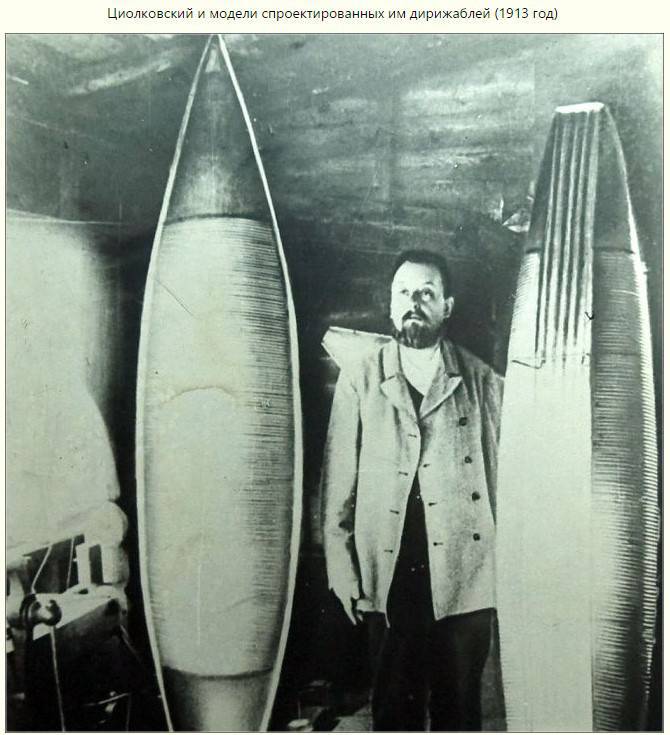
The scientific activity of Konstantin Eduardovich was not limited to mechanical toys. Initially, his attention was attracted by the kinetic theory of gases. Unfortunately, Tsiolkovsky did not know that this theory had already acquired a complete form in the writings of Boltzmann, Clausius and van der Waals. Professor Fan der Flitt, who reviewed the inventor's manuscript, wrote: “Although the article is nothing new, it reveals considerable abilities in the author ... In view of this, I would like to assist his further self-education”. Soon after, the Russian Physico-Chemical Society elected Borovsk "Kulibin" as a member, but Tsiolkovsky did not have the money to pay membership dues, and he was ashamed to write to the capital about it. However, he did not leave scientific activities, and soon his new works came out - "Duration of radiation of the sun" and "Mechanics like a changing organism." And in 1886, Konstantin Eduardovich got acquainted with the famous telephony inventor Pavel Golubitsky who visited Borovsk. Struck by the depth of knowledge of the provincial teacher, Pavel Mikhailovich suggested that he move to Moscow, but Tsiolkovsky refused. Nevertheless, Golubitsky persuaded him to contact Professor Alexander Stoletov, who offered Konstantin Eduardovich to speak in the capital with a report on a controlled metal balloon. The speech at the meeting of the Society of natural science lovers was successful, but nobody gave Tsiolkovsky the means to carry out the experiments. After returning home, the inventor fell on the ashes - the fire destroyed all his models and manuscripts. And soon his family experienced a flood. The eminent scientist had to start all over again.
At the beginning of 1892, the management of the Moscow school district decided to transfer “one of the hardest and most capable teachers” to the city of Kaluga. Tsiolkovsky received a place as a teacher of arithmetic and geometry at a local school, and after some time (at 1899) began to teach physics at a diocesan women's school. In the future, Konstantin Eduardovich was repeatedly thanked for his pedagogical activity and presented to the orders. One of the inspectors wrote: “G. Tsiolkovsky is a full specialist of his subjects and presents them with a special skill. Accuracy, clarity, strict consistency, certainty and clarity are the distinguishing features of teaching. ”
In Kaluga, the inventor met people who helped him and support him. One of them - tax inspector Vasily Assonov - put a lot of effort in order to release the second part of Tsiolkovsky's work “Aerostat controlled metal”. In addition, Assonov introduced Konstantin Eduardovich with Alexander Goncharov, the nephew of the famous writer, who allocated funds for the publication of essays by the inventor “Dreams of Heaven and Earth”. Unfortunately, the latter led to his quarrel with the author. The scientist, wanting to thank the patron of the arts, did not agree with him, put on the cover the words: "The publication of A. N. Goncharov." Alexander Nikolaevich, however, from the appearance of his name on such a “frivolous”, in his opinion, book became enraged. Later on, Konstantin Eduardovich was helped by Pavel Kanning, an apothecary by profession, who tried to give some ideas to the inventor, for example, “double boats”, which, judging from everything, was a prototype of modern catamarans, a commercial course. Despite all this, the work of Tsiolkovsky was still not honored by the St. Petersburg and Moscow scientists.
Tsiolkovsky devoted many years to the development of a metal airship, considering that, in contrast to standard soft-shell konstruktsy, its variant is distinguished by better controllability against fire safety and relative cheapness. Calculations and countless models convinced the inventor of the correctness of the chosen path. But it turned out to be much more difficult to convince others - over and over again, the aeronautic department of the Imperial Technical Society refused to help the scientist. Konstantin Eduardovich’s calculations were recognized to be correct, but the attitude to the idea itself remained skeptical: “Mr. Tsiolkovsky expressed moral support. Requests for remuneration allowances should be rejected. ” However, the inventor did not give up, deciding to publish the results of their works on their own. But the first part, which was released on the last money in 1892, was ignored - out of four hundred copies, only thirteen were sold. It is curious that at the same time, the figures of the same aeronautic department gave the green light to the experiments on the development of a controlled balloon by Austrian David Schwartz, who “ate” a lot of money and failed miserably.
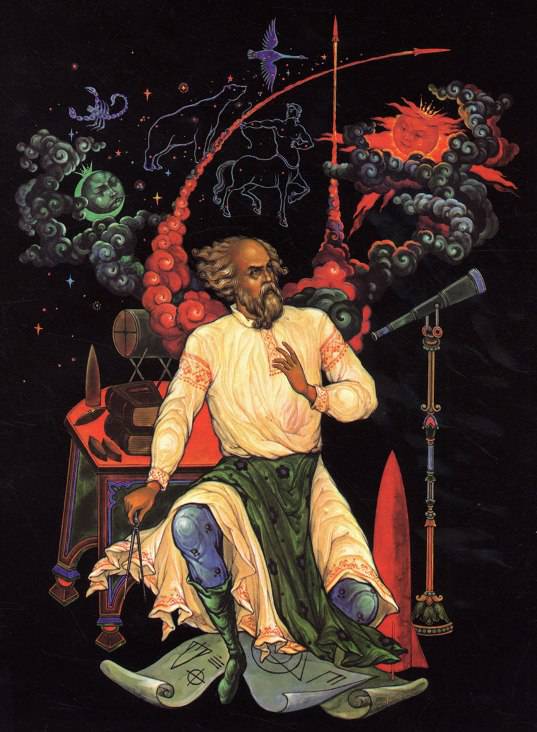
In addition to airships, Tsiolkovsky also worked on airplanes, putting forward the revolutionary idea for those years of using gyroscopes in aviation and giving a description of the simplest autopilot. Initially, studying the aerodynamic qualities of aircraft, Konstantin Eduardovich climbed onto the roof and exposed his models to the winds. However, the scientist soon made his own wind tunnel (the second in the country) or, as its inventor himself called it, a “blower”. The results of the experiments Konstantin Eduardovich sent to the Academy of Sciences. The letter was sent to Academician Mikhail Rykachev, who gave a positive review and offered to allocate material resources to the scientist. Instead of the requested thousand rubles, the Academy sent 470, but Tsiolkovsky was incredibly happy about this. Further research allowed Konstantin Eduardovich to derive a formula linking engine power with aerodynamic drag and lift coefficients. He also considered issues of turbulence. A report on eighty writing sheets with six dozen tables, drawings, was sent to the Academy, but this time Rykacheva was not satisfied with its form, which was different from that accepted in scientific circles. Tsiolkovsky, who decided that they did not trust him, refused to correct the work, and his works were not published. The inventor did not forget this insult - when many years later the French scientist Alexander Eiffel came to similar results, Konstantin Eduardovich wrote caustically: “Now the Academy can rejoice that it has not been deceived in me and has not thrown money into the wind. Thanks to Eiffel’s experiments, my most surprising findings were confirmed. ”
In 1896, Tsiolkovsky, having studied the works of the Russian inventor Alexander Fedorov about new methods of aeronautics, began to develop them. A year later, he managed to derive a well-known formula that determines the relationship between mass and rocket speed, mass of explosives and the rate of flow of combustion products. Konstantin Eduardovich, accustomed to accuracy, mechanically recorded the date - 10 in May of 1897, securing his priority in these studies. And in the spring of 1903, the first part of his work devoted to the study of outer space with rocket vehicles was published in the journal Scientific Review. In particular, it proved the impossibility of going into space using artillery guns or on a balloon, and as an alternative, a rocket was proposed that acts on a mixture of liquid hydrogen and oxygen. The genius researcher wrote: “Only from the moment of the use of jet instruments in astronomy will a new era begin”. The scientist also suggested that the rocket will be controlled by automatic instruments. It is curious that censorship for a long time did not want to publish an article, fearing that such studies would encroach on religious issues. Mikhail Filippov - the editor of "Scientific Review", at the prompting of Mendeleev, reduced the arguments in favor of the works of Tsiolkovsky to pyrotechnics. This had an effect, although the article did not evoke the responses the scientist had dreamed of.
It should be noted that it was not just Konstantin Eduardovich who had the idea of using jet propulsion for flying. Among the most famous of his colleagues and competitors can be called the French Robert Esno-Peltri, the American Robert Goddard and the German Herman Obert. Like the Russian scientist, they were all violent enthusiasts and dreamers. Nevertheless, Tsiolkovsky never concealed the results of his research, willingly sharing them with all those interested. Esno-Peltri and Obert were not so open, jealous of their priority in this area. As for Goddard, he patented every little thing and rejected all offers of cooperation. According to the precise expression of his contemporaries, the American considered “the rocket area to be his patrimony, and other scientists working in it - poachers”.
The beginning of the new century was for Konstatin Eduardovich a time of severe trials. Misfortunes fell upon him one after another. In 1902, his son Ignatius, a talented mathematician and physicist, a student at Moscow University, committed suicide for unknown reasons. Konstantin Eduardovich wrote: “Hard, terribly sad time has come. From the very morning, when I wake up, I feel horror and emptiness. ” By the way, Tsiolkovsky had seven children, and the inventor had to go through five of them. And in 1903 in St. Petersburg, under the mysterious circumstances, the editor of the Scientific Review Professor Filippov, who published the works of Konstantin Eduardovich, died. Mikhail Mikhailovich’s second part of the manuscript on the study of space was lost without a trace. Soon another Tsiolkovsky manuscript, devoted to air resistance experiments sent by Zhukovsky, disappeared. After that, the inventor began to write all the works for a carbon copy, keeping copies of himself. At 1905, the Tsiolkovsky family was finally able to buy their own home. However, it became an indirect cause of another misfortune. The stormy flood in 1908 flooded it, destroying a significant part of the models, books and manuscripts.
Years passed, science and technology developed, and Tsiolkovsky's thoughts gradually began to find a response among enthusiasts and scientists. First and foremost, this was facilitated by the rewritten second part of the work on space exploration, published in 1911. This time, the article caused active controversy, while Konstantin Eduardovich had the first associates and followers. The editor of the Bulletin Bulletin Vorobyev wrote: “The resonance was enormous. Popular scientific and technical journals, inventors, general press responded to the article, and numerous authors offered their own designs of jet planes. ” At that time, the famous popularizer of science, Vladimir Ryumin, said: “Tsiolkovsky is a genius who opens the way to the stars for future generations. You need to shout about it! His ideas need to be made available to the widest possible masses. ” Konstantin Eduardovich himself did not stop at what he had achieved, offering more and more advanced designs of space rockets. It should be noted that rocket technology was for him only a way into outer space: “Most people think that I worry about the fate of the rocket because of the rocket itself. This is a gross mistake. For me, rockets are only a means, only a method of penetrating into the depths of the Cosmos, but by no means an end in itself ... ”
Revolution Konstatin Eduardovich met with joy. His views were completely communist, and one of his daughters had connections with the RSDLP. In 1917, the scientist outlined the requirements for people's power: "Free treatment, universal education, the elimination of the exploitation of man by man, universal secret voting, equal distribution of all factories and benefits of the earth among people, care for the elderly, minors and people of art." However, the first post-revolutionary years for Tsiolkovsky turned out to be very difficult. At 1918, he noted: “The pension amounts to 35 rubles, and I don’t die of hunger just because my daughter works in the local food department.” At the same time, Konstantin Eduardovich survived the death of three more of his children - Ivan, Alexander and Anna.
Life became a little easier after the Socialist Academy chose Tsiolkovsky as a competitor member (non-full member) in August 1918. Also the genius inventor was assisted by organizations such as the Union of self-taught persons and the Russian Society of World History Fans. In 1919, Tsiolkovsky returned to teaching, taking the place of the teacher of the sixth Kaluga labor school. Despite his illness and age, Tsiolkovsky was eager to help the new government and offered to build a dirigible for front-line needs. However, his knowledge and experience were not required at this time either. And at the end of 1919, Constantine Eduardovich unexpectedly came the staff of the Cheka and took him to Moscow. The inventor spent two weeks at the Lubyanka. This story is quite confusing, the victim himself wrote: “I have long communicated with one pilot from Kiev, who showed great attention to my aeronat. Without any reason, he wrote to a third party that I know people who are familiar with the situation on the Eastern Front. This letter got into the Cheka. Of course, it is impossible to find what I don’t have, but I was nevertheless arrested ... ” It is curious that when Tsiolkovsky was released from the Cheka, he did not have time to go to the Kaluga train, went back and asked to spend the night in a cell.
In the twenties of the last century, in the wake of the general ascent, flights into space no longer looked something incredible. And in 1921, the special commission under SNK of the RSFSR decided to appoint Konstantin Eduardovich “in view of his special merits” a life pension of five hundred thousand rubles a month. From now on, the inventor had the opportunity to engage in his scientific and technical developments without interference. The scientist wrote: “I left the school — work that was beyond my age — and gave myself up to my favorite work — jet instruments.” In subsequent years, Tsiolkovsky, exchanging the sixth ten, worked more than ever before. In his articles “Strateoplan, semi-reactive,” “Rocketplan,” and “Jet Airplane,” he outlined the theory of motion of aircraft with a liquid-jet engine. At 1926, he proposed an ambitious space exploration program, starting with the development of jet planes and ending with the resettlement of people throughout the Milky Way. By the way, the first stage of this program, Konstantin Eduardovich, considered the construction of orbital stations. At that time, groups and research institutes were created in the country to study issues of jet propulsion. Their employees constantly consulted with Konstantin Eduardovich, and he answered all questions with pleasure. Nonetheless, he flatly refused from numerous proposals to become the head of one of such units, who was accustomed to working alone. At the same time, individual representatives of official science, as before, did not favor the self-taught scientist, and many of Tsiolkovsky’s ideas continued to be considered a product of his violent fantasy, for example, a space elevator built between a space station in geostationary orbit and the earth’s surface. Scientists were mocked by his thoughts about the need for a complete biological cycle of plants during long flights.
The very same scientist was closely working on the same subject. Konstantin Eduardovich substantiated the idea of creating hovercrafts, thought about ways to study the depths of the sea and the transformations of deserts, suggested wheels “moving forward at the bottom of aircraft hulls. As if guessing about the discovery of the laser, he considered the questions of organizing space communications with the help of "parallel beams of electromagnetic rays, electric or even light ...". Not a single computing machine existed yet, and Konstantin Eduardovich predicted that "mathematics will enter all fields of knowledge." It is curious that Tsiolkovsky was an opponent of the hypothesis about the future thermal death of the Universe, as well as Einstein's theory of relativity.
At leisure, the inventor liked to read science fiction novels. It is curious that he himself wrote works in this genre, saying that they "carry new thoughts to the masses." In "Free Space" Tsiolkovsky spoke about the effects of weightlessness. Subsequently, Gagarin was amazed at how correctly the scientist foresaw all that he had happened to meet and experience. And the description of the lunar world given in the story “On the Moon” is so authentic, as if the author himself was there. In addition, Konstantin Eduardovich took part in the creation of the Soviet science fiction film "Space Flight", giving the necessary advice and completing the drawings of the rocket plane. As a result, the scientific component of the film looks almost flawless, even by today's standards.
In the last years of his life, Tsiolkovsky became increasingly interested in philosophical questions, reflecting on the essence of the universe. The famous thinker believed that man is not a “crown of creation” and evolution will not stop there. In the future, he predicted the transition of the human race to a “radiant state” and practically immortal life in space. Konstantin Eduardovich himself always led a healthy lifestyle - he did not smoke, did not drink, and until his extreme old age he rode a bicycle. 75 anniversary of the scientist was widely celebrated in the Soviet Union - Tsiolkovsky was awarded the Order of the Red Banner of Labor, he was presented with a new big house on the street named after him, glorified at various events, which the inventor, in his usual modesty, was extremely embarrassed. He himself said about the results of his activity: “All my life I have only wished for one thing - to push humanity forward a little”.
In the spring of 1935, doctors gave him a terrible diagnosis - cancer. Konstantin Eduardovich, as if unaware of his illness, continued to work. In September, he agreed to the operation and moved to the hospital. The central press published reports on the health of the scientist. However, the operation did not help, and a few days later - 19 September 1935 - Tsiolkovsky died. He was buried in the Country Garden, where he loved to meditate and walk so much.
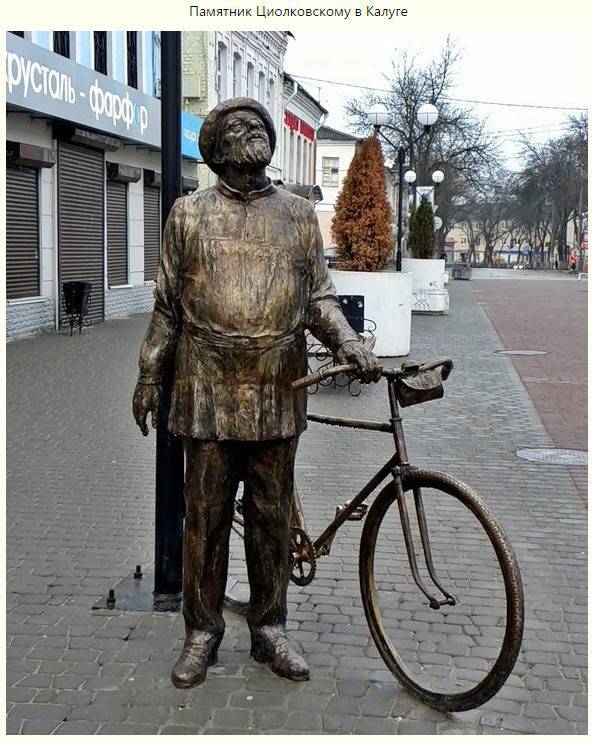
According to the materials of the weekly edition “Our history. 100 Great Names "and the site http://www.tsiolkovsky.ru.
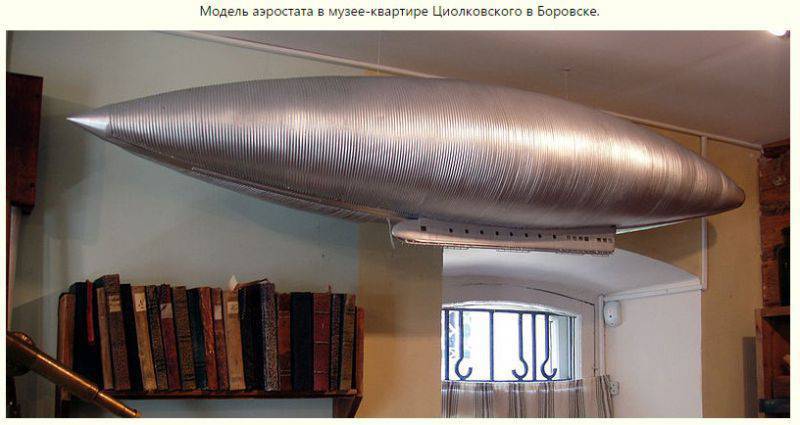
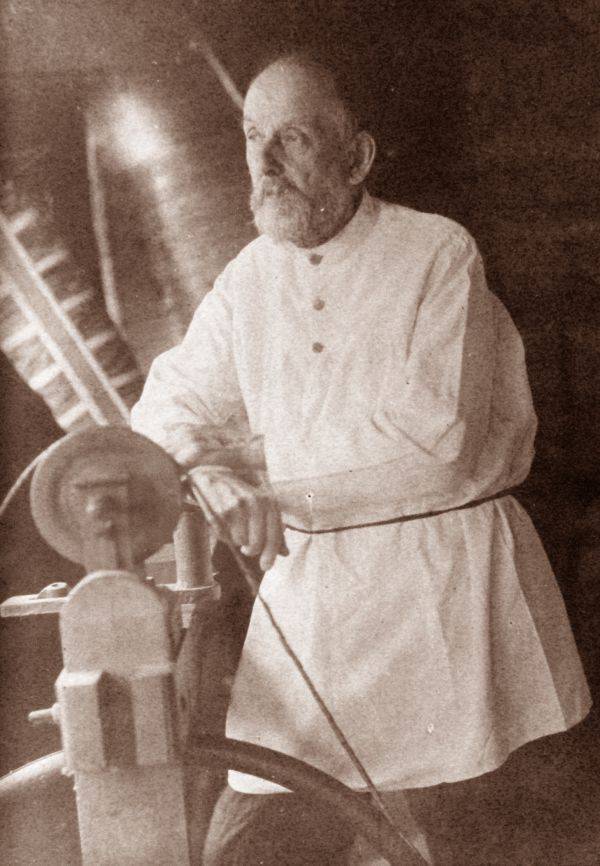
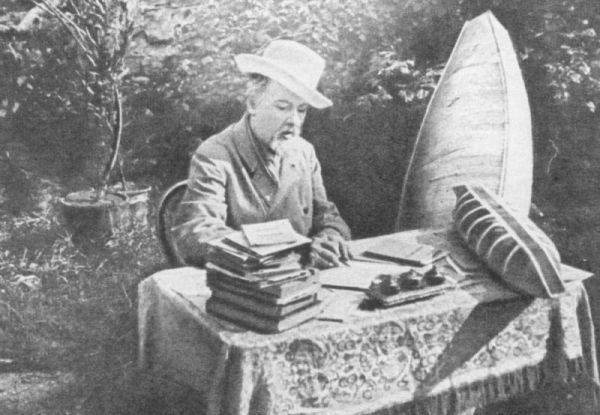
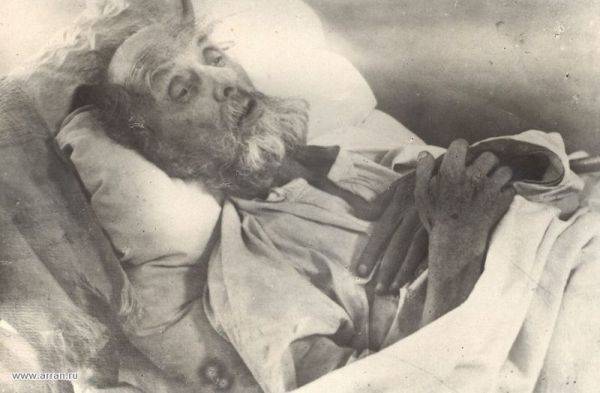
Information